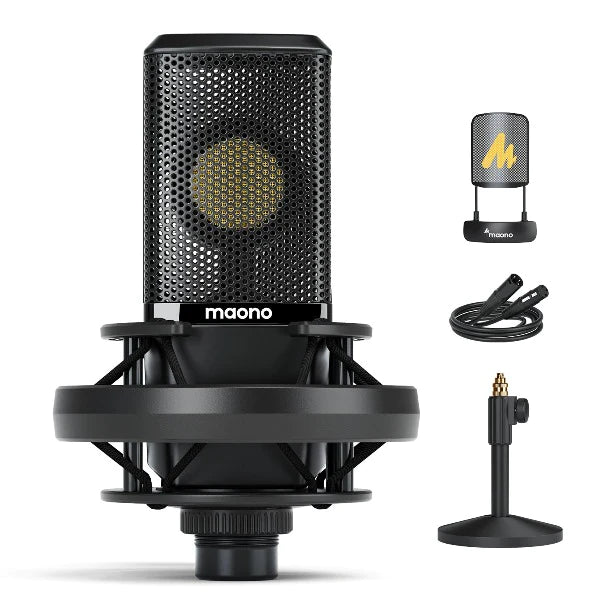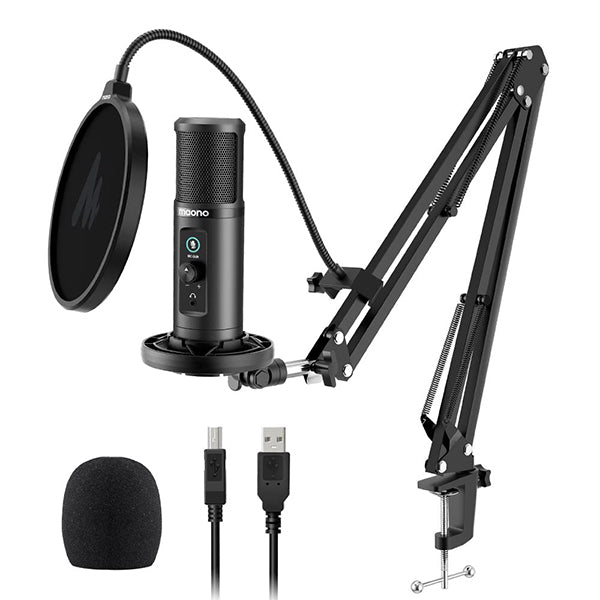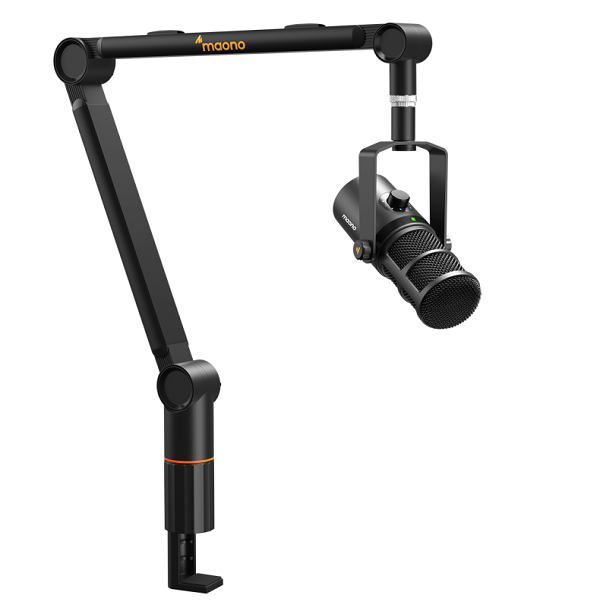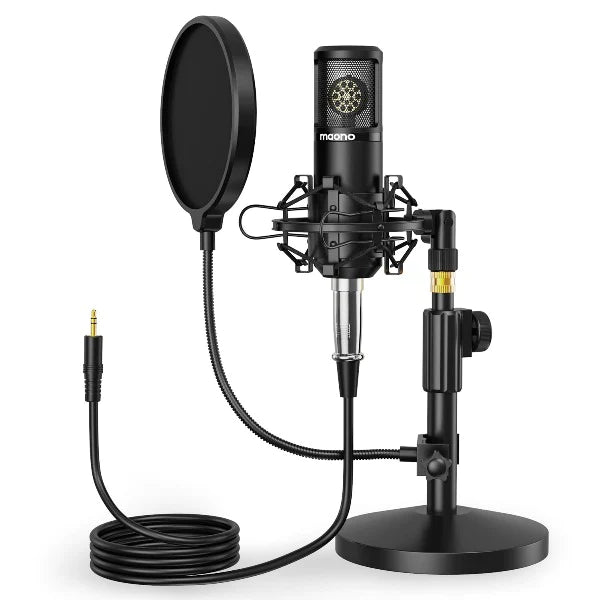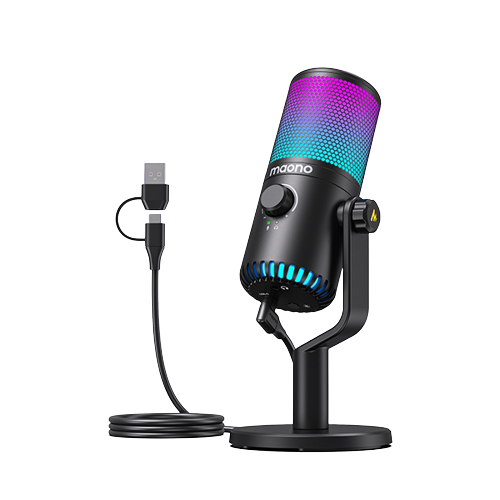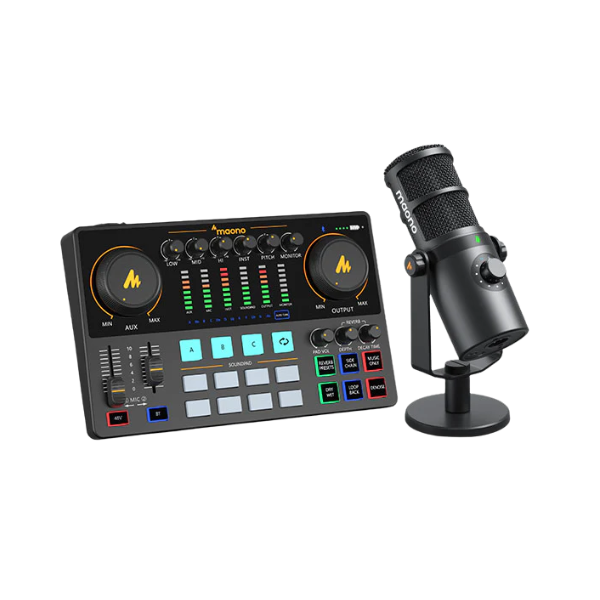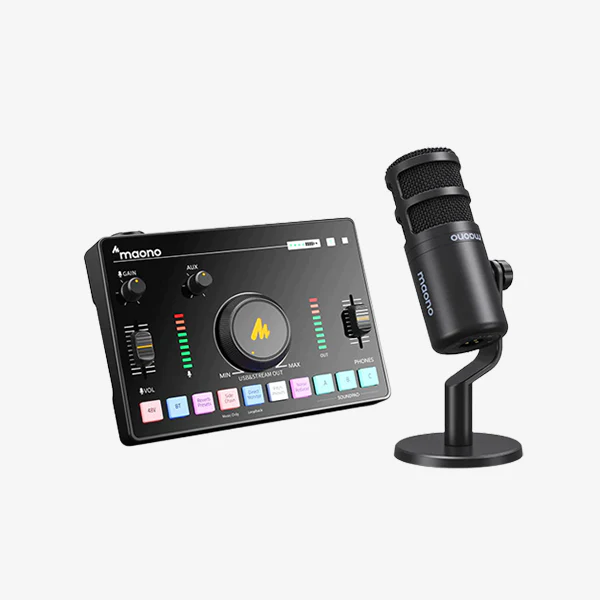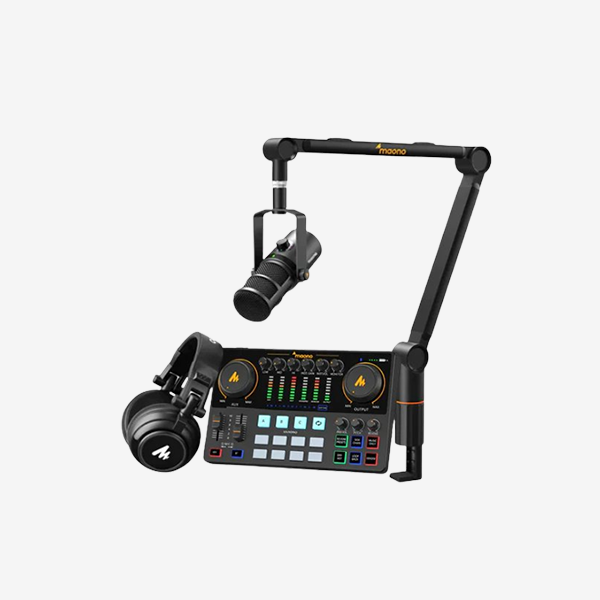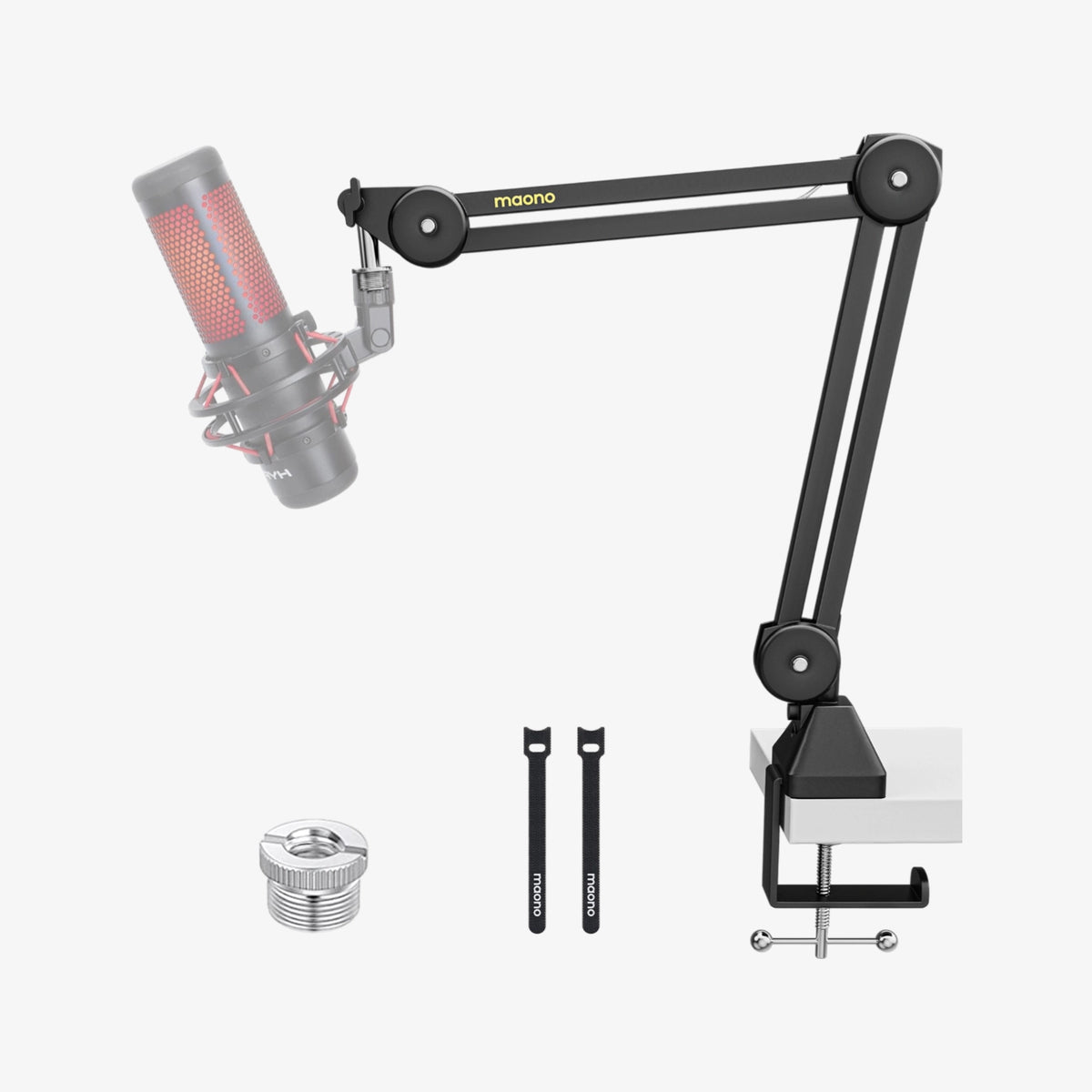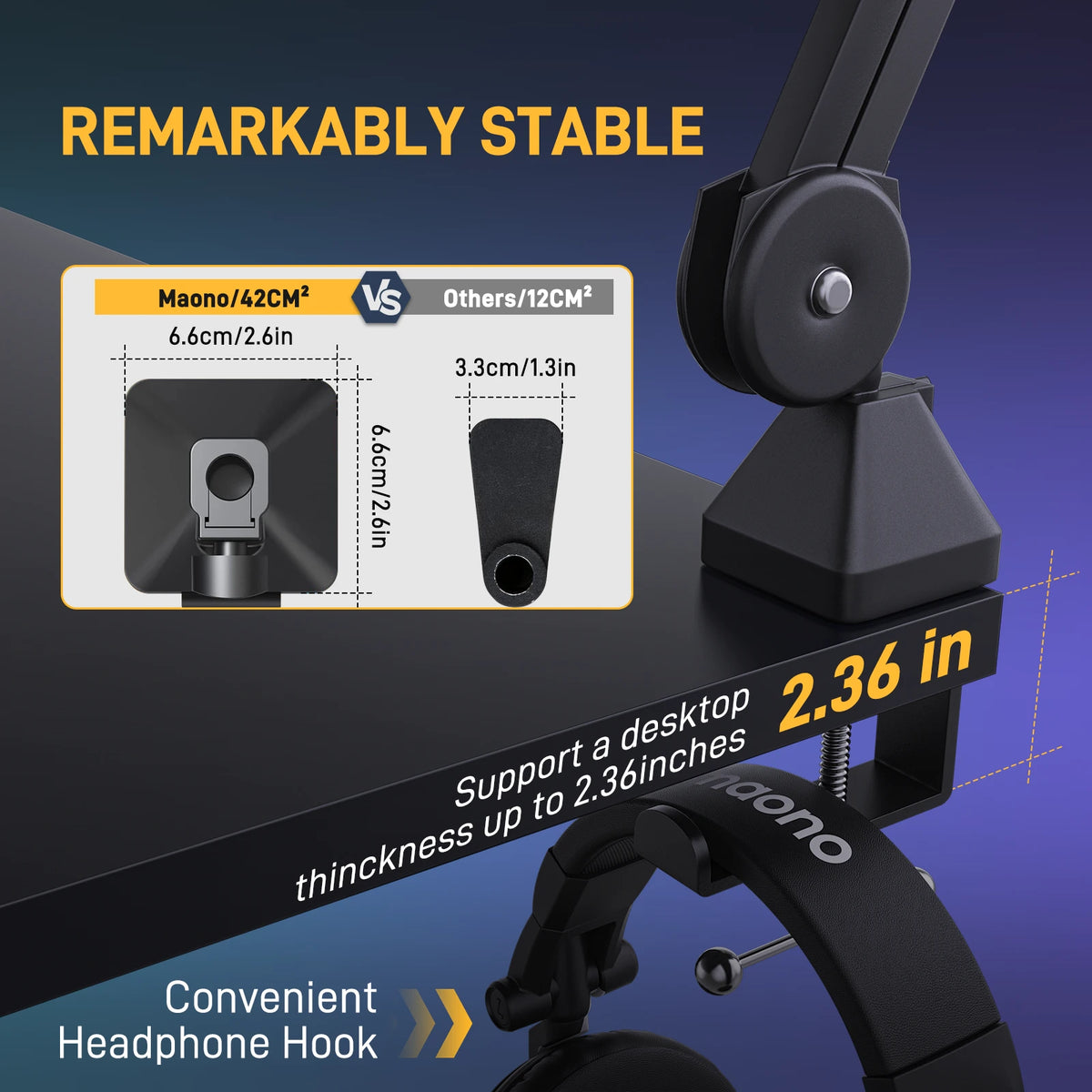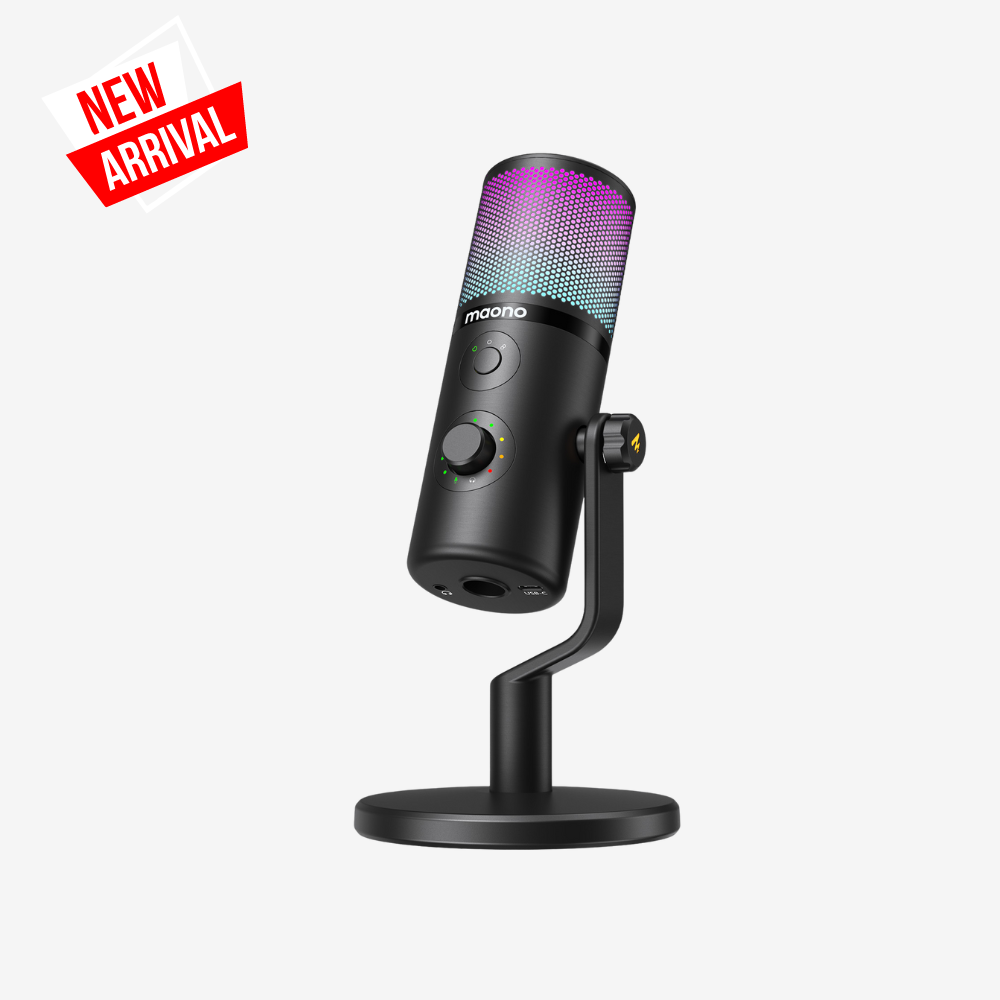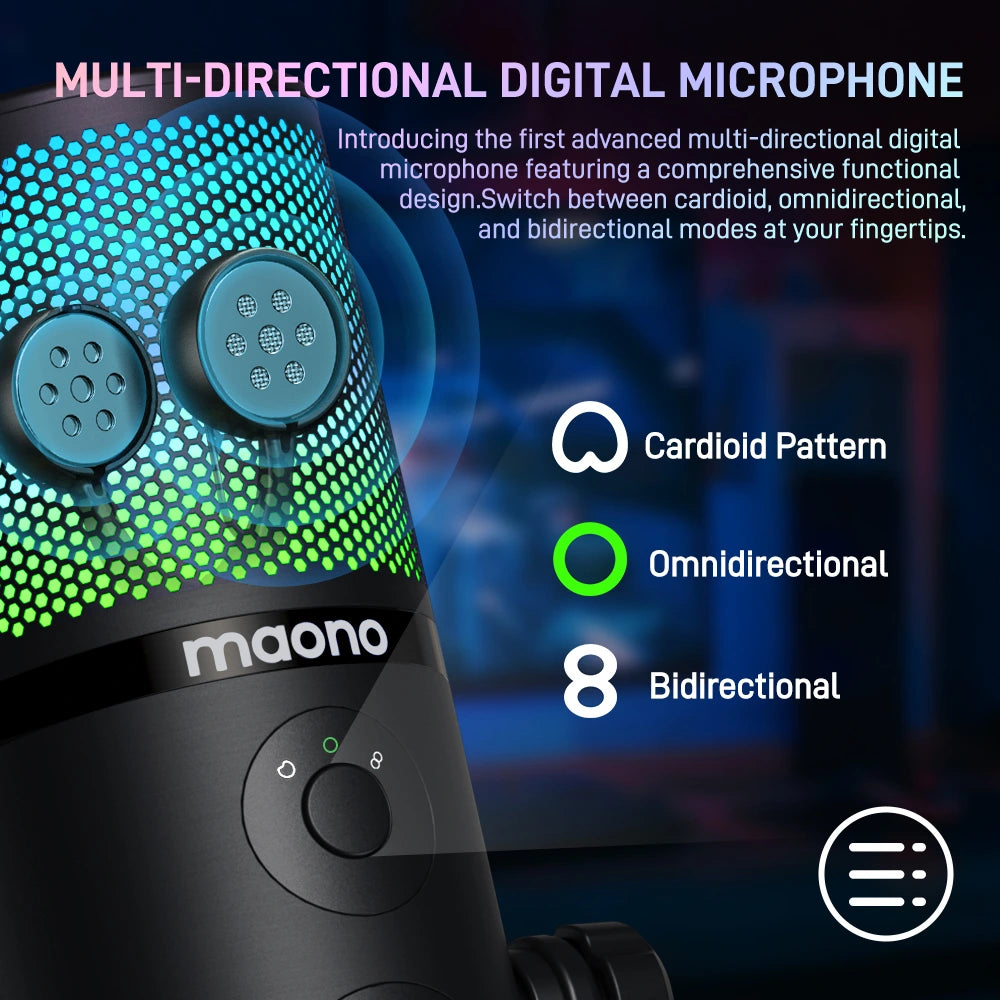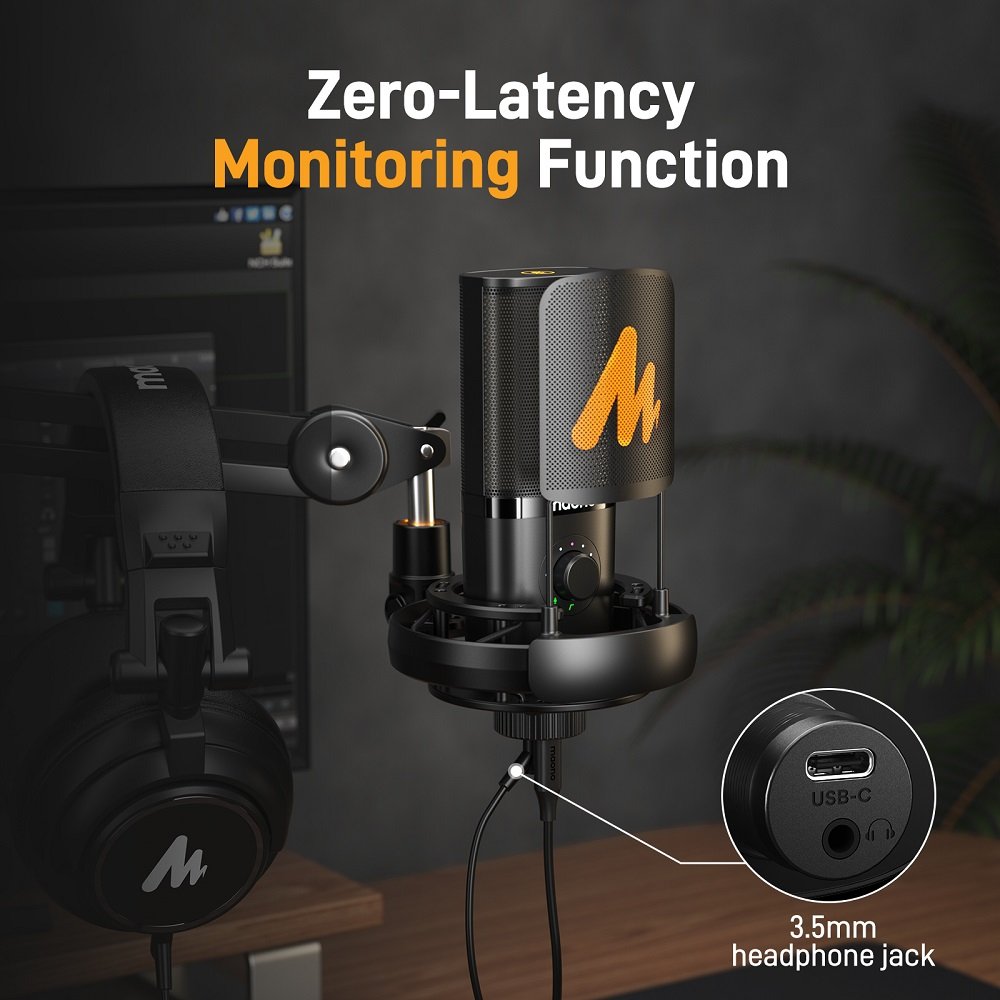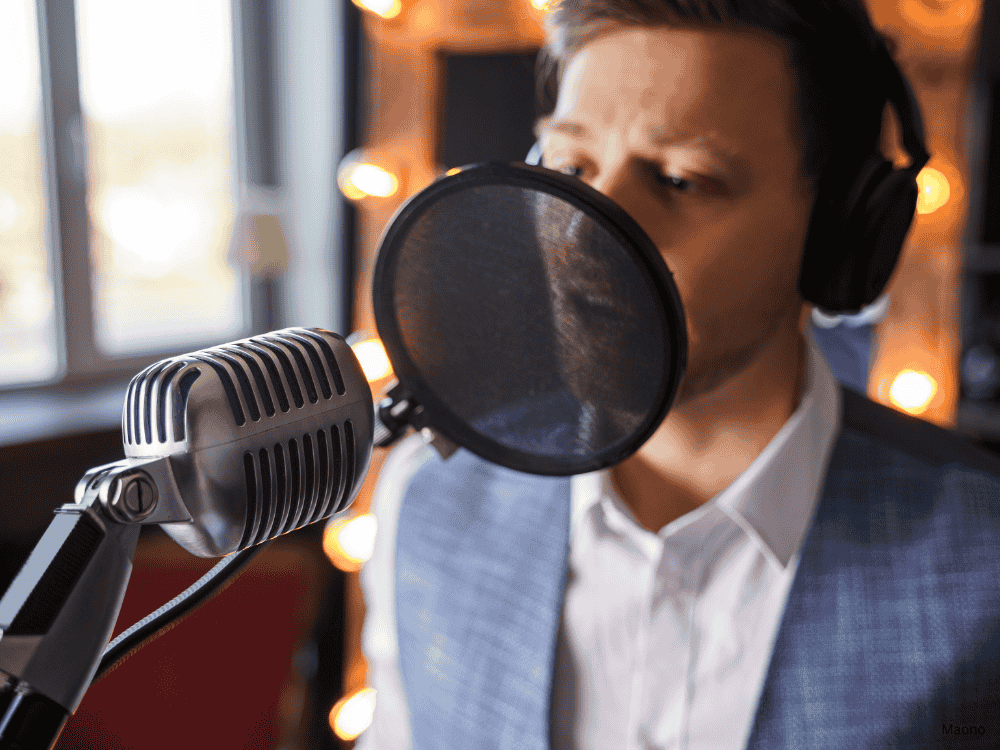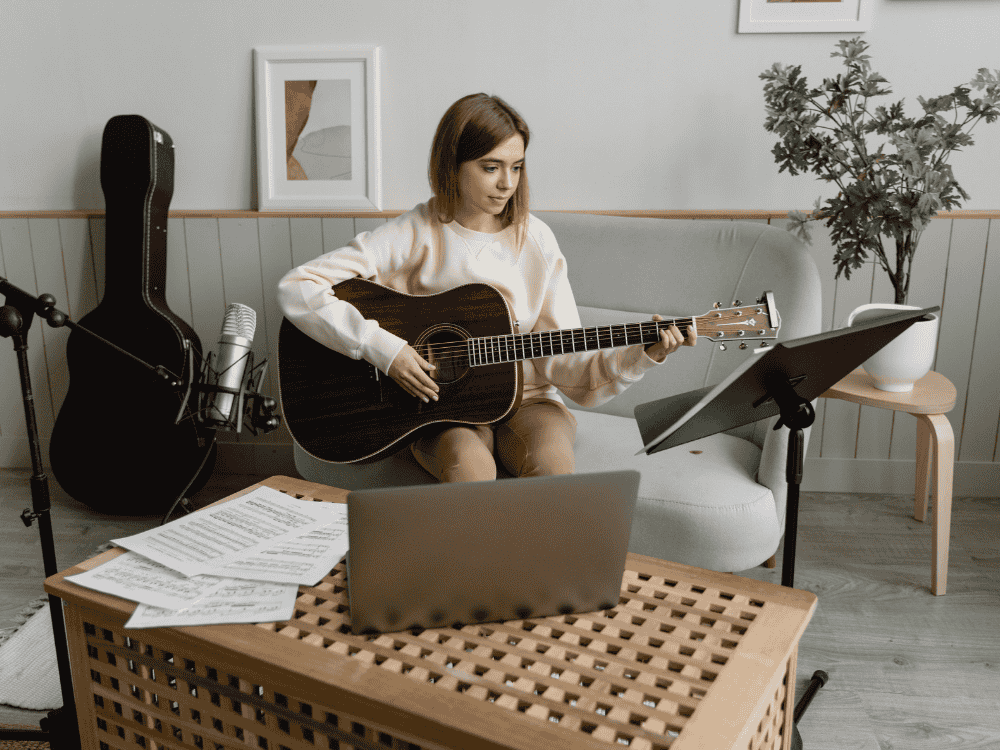With more individuals creating content for podcasts, games, or music recording, using a USB vocal microphone is becoming more practical than relying on the built-in microphones in laptops, which are becoming less effective. All you need is a USB connection to your computer to record audio with a USB microphone, which can significantly enhance the quality of your recordings. Because of their higher audio quality and ease of use, USB vocal microphones are a popular option for designers. In this article, we'll review various budget-friendly options, examine the special features of microphones for home recording, and discuss what to look for in a USB vocal microphone.
What You Should Know About A USB Vocal Microphone
Notable Features to Look Out For
When buying a USB vocal microphone, there are several standout features you should consider:
- Sound Quality: The microphone's capacity to record crisp, high-quality sound.
- Frequency Response: This parameter establishes how well your voice can be captured by the microphone.
- Polar Patterns: Refers to the pickup pattern or directionality of sound waves that a microphone can capture. It describes how the microphone responds to sounds coming from different directions.
- Compatibility: This is the ability of two devices to work together. For example, it verifies whether the microphone is compatible with the Linux, macOS, or Windows operating system.
- Ease of Use: Ease of use refers to how easily users can operate a microphone. One example of this is USB vocal microphones that offer plug-and-play functionality.
- Build Quality: Build quality refers to the durability of the material construction and how well a product is made to ensure reliability and longevity.
- Additional Features: Special features like built-in headphone jacks, gain control, and mute buttons can enhance your recording experience.
What is a Recording Polar Pattern?
A polar pattern defines how a microphone picks up sound from different directions. The most common polar patterns are:
- Cardioid: Captures sound from the front while minimizing noise from the sides and rear. Ideal for vocals.
- Omnidirectional: Captures sound equally from all directions. Great for capturing room ambiance.
- Bidirectional: Captures sound from the front and rear, but not the sides. Useful for interviews.
- Supercardioid/Hypercardioid: Similar to cardioid but with a tighter pickup pattern and slight sensitivity to the rear. Good for isolating sound sources.
Compatibility with PC and Mac
Most USB microphones are designed to work with both PC and Mac systems. They typically require no additional drivers, making them plug-and-play. However, always check the manufacturer’s specifications to ensure compatibility.
Recording Quality Requirements
The recording quality you need depends on your use case. For professional music production, look for microphones with higher bit rates and sampling frequencies. For podcasting or casual recording, standard-quality microphones suffice.
USB vs. XLR Microphones
Recording music with USB mic is a breeze with its simple plug-and-play feature, while some XLR microphones are complex with its setup and there might be an additional device required before using. USB vocal microphones are convenient and easy to use, making them ideal for beginners and casual users. XLR microphones offer higher audio quality and flexibility but require additional equipment like audio interfaces or mixers, making them more suitable for professional settings.
Parameters to Consider When Evaluating Microphones
1. Sound Quality
For every microphone, high-quality sound reproduction is essential. Seek out microphones that have a low self-noise level and a wide frequency response.
2. Controls and Jacks
Convenience and adaptability are increased by integrated controls such as headphone connectors, mute buttons, and gain knobs.
3. High-Resolution Recording
High-resolution recording microphones (24-bit/96kHz) record with greater detail and offer higher audio quality..
4. Polar (or Pickup) Patterns
Select a microphone whose polar pattern is suitable for the recording situation. When recording vocals, cardioid is a popular option.
5. Included Software
Certain microphones include recording and editing software in the package. For beginners, this can be a useful feature.
6. Special Features
You can improve your recording experience with special features like shock mounts, built-in pop filters, and zero-latency monitoring.
Top 7 Picks for Budget-Friendly USB Mics for Singing
- Samson Q2U: A versatile mic with both USB and XLR connectivity, offering great sound quality at a low price.
- Blue Snowball iCE: Known for its simplicity and solid audio quality, it's perfect for beginners.
- Fifine K669B: Offers excellent sound quality and a durable build at a budget-friendly price.
- JLab Talk GO: Compact and portable with good audio quality, ideal for on-the-go recording.
- Maono A04: Delivers high-quality sound and includes a pop filter and shock mount. It's what you will consider the best cheap USB microphone for singing.
- Tonor TC-777: Easy to set up and use, providing good sound quality for the price.
- Razer Seiren Mini: A compact microphone with impressive audio quality for its size.
Which Maono USB Vocal Microphone Model is Best for Recording Music at Home?
The Maono PM422 stands out as an excellent choice for home recording. It offers a professional sound quality, thanks to its high bit rate and sampling rate. The built-in gain control and mute button add convenience, while the included pop filter and shock mount enhance recording quality by minimizing unwanted noise. Its cardioid polar pattern is ideal for capturing clear vocals, making it a strong contender for home music production.
Recommendations for the Best USB Microphones
1. Monoprice Dark Matter Sentinel Streaming Microphone
Known for its high-quality sound and versatility, this microphone is great for both streaming and vocal recording.
2. Mackie EM-91CU
Offers excellent sound quality and durability, making it a reliable choice for various recording needs.
3. Rode NT1 5th Generation
A top-tier microphone with exceptional sound quality, ideal for professional studio vocal recording.
4. Samson Go Mic
Compact and portable with good sound quality, ideal for on-the-go recording.
5. Movo UM700
Offers multiple polar patterns and good audio quality, tailored for podcasters and musicians.
6. Blue Yeti Nano
Compact with high-quality sound and multiple polar patterns, perfect for content creators.
7. Audio-Technica AT2020USB-X
Known for its clear and detailed sound, ideal for professional and home studio vocal recordings.
Noteworthy USB Vocal Microphones:
1. Audio Pro X5 USB Microphone
Combines professional sound quality with ease of use, suitable for various recording applications.
2. JLab Epic Talk
Known for its good sound quality and portability, ideal for on-the-go recording.
3. Logitech Blue Yeti Classic
A well-known microphone with versatile features and high-quality sound.
4. Maono PD400XS
This ones a dual USB & XLR microphone. It offers excellent sound quality and versatility with multiple polar patterns.
5. Rode PodMic USB
Built for podcasters, this microphone delivers rich sound and durability.
6. PreSonus Revelator
Combines high-quality sound with advanced features like built-in effects and multiple polar patterns.
7. PreSonus Revelator Dynamic
Offers dynamic sound quality with easy-to-use features, suitable for various recording needs.
8. Sennheiser Profile
Known for its high-quality sound and professional build, ideal for serious content creators.
9. Shure MV5C
Compact and portable with good sound quality, suitable for on-the-go recording.
10. Tonor TD510
Affordable with good sound quality and ease of use, perfect for beginners.
11. HyperX Quadcast
Offers multiple polar patterns and vibrant sound quality, ideal for gaming and streaming.
12. Joby Wavo POD
Compact and versatile with good sound quality, suitable for various recording scenarios.
Frequently Asked Questions About USB Vocal Microphones
1. Are there any standalone mics that work with Xbox One?
Yes, there are standalone USB microphones that can work with Xbox One, though compatibility can vary. Always check the specifications and user reviews for confirmation.
2. Does the recording quality of an XLR microphone surpass that of a USB microphone?
Generally, XLR microphones offer higher audio quality and more flexibility for professional use. However, USB microphones provide sufficient quality for most casual and semi-professional applications.
3. Is a USB microphone best for recording vocals?
USB microphones are a great choice for recording vocals, especially for beginners and those who need a simple setup. They offer good sound quality and ease of use.
4. What USB mic has the best quality?
A good USB mic that has the best quality is the microphone that meets your specific requirements. The Maono PM422, A04, and HD300T are some of the best vocal microphones suitable for home recording.
5. Is purchasing a USB vocal microphone worthwhile?
Yes, if you are looking to improve your audio quality for recording vocals, podcasts, or streaming, a USB vocal microphone is a worthwhile investment.
6. Is it possible to connect a USB microphone to an Android phone or tablet?
Yes, many USB microphones can be connected to Android devices using an OTG (On-The-Go) adapter, allowing for mobile recording.
7. What is a good USB microphone for recording vocals?
The Audio-Technica AT2020USB-X is an excellent choice for recording vocals due to its clear and detailed sound.
8. What is the downside of a USB mic?
While USB microphones offer convenience and ease of use, there are a few downsides to consider:
Limited Audio Quality: Although USB microphones provide good sound quality, they generally don't match the high fidelity of XLR microphones paired with a quality audio interface.
Less Flexibility: USB microphones are designed for direct computer connection, which limits their use in more complex audio setups that require mixing consoles or multiple audio inputs.
9. Can you record vocals and guitar with a USB microphone?
Yes, you can record both vocals and guitar with a USB microphone. However, there are a few things to consider to achieve the best results:
- Placement: Proper microphone placement is crucial. For vocals, position the mic at mouth level, about 6-12 inches away. For the guitar, position it near the sound hole or at the 12th fret, depending on the desired sound.
- Polar Pattern: A cardioid polar pattern is ideal for isolating sound from the front while minimizing background noise, making it suitable for recording both vocals and guitar.
- Recording Environment: Ensure you're recording in a quiet, acoustically treated environment to minimize unwanted noise and reflections.
Some USB microphones come with dual inputs or stereo recording capabilities, which can further enhance the recording of multiple sound sources.
10. How can I improve the sound quality of my USB vocal microphone?
To improve the sound quality of your USB vocal microphone, consider the following tips:
- Proper Placement: Position the microphone at the correct distance and angle to capture your voice. Using a pop filter can help reduce plosive sounds.
- Acoustic Treatment: Minimize room reflections and background noise by using acoustic panels, foam, or blankets to treat your recording space.
- Gain Adjustment: Set the microphone gain to an appropriate level to avoid distortion or noise. Most USB microphones have a gain control knob.
- Software Enhancements: Use audio editing software to apply EQ, compression, and other effects to enhance the recorded audio. Many microphones come with bundled software for this purpose.
- Monitoring: Use headphones to monitor your recordings in real time. This helps you make immediate adjustments to microphone placement or settings.
- Avoid Clipping: Ensure that your input levels are not too high, as clipping can result in distorted audio. Aim for levels that peak around -6dB to -3 dB.
- Environment: Choose a quiet recording environment free from background noise and distractions. Close windows, turn off fans and reduce ambient noise as much as possible.
By paying attention to these factors, you can significantly enhance the quality of your recordings with a USB microphone.
Conclusion
Picking the right USB vocal microphone can greatly enhance your recording experience, whether you’re a beginner or a seasoned content creator. By understanding key features, evaluating budget-friendly options, and considering models like the Maono PM422, A04, and PD400XS, you can make an informed decision that suits your needs. With the right setup and a bit of know-how, you can achieve professional-quality audio recordings from the comfort of your home.











